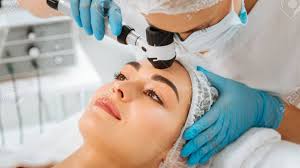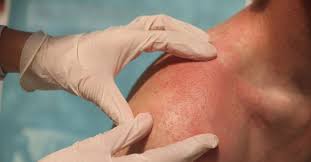Cosmetic dermatology has come a long way in the past decade. What once required surgery and long recovery times can now often be done in under an hour—sometimes during a lunch break. With the help of science and technology, today’s cosmetic procedures are more effective, less invasive, and more natural-looking than ever before. If you’re curious about what’s new in the world of skincare and anti-aging treatments, here’s a human-friendly breakdown of the latest advancements in cosmetic dermatology.
1. Injectables Are Smarter Than Ever
Injectables like Botox and dermal fillers have been popular for years, but the way they’re being used today has evolved significantly.
- Micro-dosing Botox: Instead of freezing the entire forehead, small, precise amounts are used for a more natural and expressive look—this is called “Baby Botox.”
- Next-gen fillers: New hyaluronic acid fillers (like RHA) are designed to move with your facial expressions, giving more natural results.
- Preventive injectables: Younger people are getting small amounts of Botox or fillers to prevent deep wrinkles from forming in the first place.
2. Non-Surgical Skin Tightening Is Booming
Surgical facelifts are no longer the only option for sagging skin. Several new technologies are making it possible to tighten the skin without cutting or stitching.
- Ultrasound-based treatments (like Ultherapy) use sound waves to stimulate collagen deep within the skin.
- Radiofrequency microneedling (e.g., Morpheus8) combines needles and heat to firm the skin from the inside out.
- Laser lifting: Fractional lasers now work deeper and more precisely, reducing sagging and wrinkles with minimal downtime.
3. Laser Treatments Are More Personalized
Modern laser devices can now be tailored to individual skin types, concerns, and tones.
- Picosecond lasers are faster and safer, especially for treating pigmentation, acne scars, and even tattoos.
- AI-powered lasers analyze your skin and adjust energy levels accordingly, reducing the risk of burns or side effects.
- Fractional CO2 lasers have improved with built-in cooling systems, minimizing discomfort and speeding up recovery.
4. Regenerative Aesthetics Are on the Rise
Instead of just adding volume or smoothing wrinkles, dermatologists are now focused on helping the skin heal itself.
- PRP (Platelet-Rich Plasma): This “vampire facial” uses your own blood to stimulate skin renewal, often combined with microneedling.
- Exosome therapy: Tiny molecules that promote skin healing and collagen growth—like a booster shot for your skin.
- Stem cell treatments: Though still being studied, stem cells show promise in repairing sun-damaged or aging skin naturally.
5. Body Contouring Without Surgery
Fat reduction without liposuction? Yes, it’s now very possible.
- CoolSculpting Elite: A newer version of the popular fat-freezing treatment that works faster and more evenly.
- EmSculpt Neo: Builds muscle and burns fat using electromagnetic energy—great for abs, arms, and even the butt.
- Body RF tightening: Tightens skin while reducing fat using heat-based devices.
6. Advanced Acne and Scar Treatments
Acne scars used to be hard to treat, but newer technologies are making a difference.
- Laser resurfacing for scars is now more customizable and effective with less downtime.
- Subcision + filler combo: Breaks up deep acne scars and fills them in at the same time.
- LED light therapy: Especially blue and red light combinations help kill acne-causing bacteria and reduce inflammation naturally.
7. Melasma and Pigmentation Care Has Improved
Hyperpigmentation and melasma are notoriously tough to treat, but a few recent advancements offer real hope.
- Tranexamic acid treatments (oral and topical) are now commonly used for stubborn melasma.
- Laser + skincare combinations help fade pigmentation without worsening it (especially for people with darker skin tones).
- Chemical peels are milder and more targeted, focusing on reducing pigmentation with fewer risks.
8. Personalized Skin Mapping and AI Diagnosis
Technology is now helping dermatologists understand your skin in ways never possible before.
- 3D skin scanners analyze pores, wrinkles, and pigmentation to create custom treatment plans.
- AI analysis tools compare your skin against thousands of databases to suggest the most effective treatments.
- Teledermatology: You can now consult with top dermatologists remotely and get prescriptions or product advice without leaving your home.
9. Natural-Looking Aesthetics Are the New Standard
One of the biggest trends in cosmetic dermatology today isn’t a single treatment—it’s a mindset shift.
- “Less is more”: People want subtle improvements, not dramatic changes.
- Harmonizing, not freezing: Treatments are designed to bring balance to your facial features, not erase them.
- Skin-first focus: More patients want to enhance their natural beauty rather than fight aging aggressively.
Final Thoughts
The world of cosmetic dermatology is advancing fast—what was once impossible is now routine. From injectables that move naturally to lasers that adapt to your skin, today’s procedures are all about personalization, precision, and prevention. If you’re thinking of trying a new cosmetic treatment, now is the best time to explore what’s out there—just make sure to consult with a board-certified dermatologist who can help you choose the safest and most effective options for your unique skin.
FAQs: Latest in Cosmetic Dermatology
1. Are non-surgical treatments as effective as surgery?
Non-surgical treatments have come a long way. While they may not deliver the same dramatic results as surgery, they offer noticeable improvements with much less downtime.
2. Is laser treatment safe for dark skin tones?
Yes—many modern lasers are now safe for darker skin tones, but it’s important to go to a dermatologist who understands skin type variations.
3. How long do injectables like Botox and fillers last?
Botox usually lasts 3–4 months, while fillers can last 6–18 months depending on the type and location.
4. What is the downtime for most new cosmetic procedures?
Many modern procedures are “lunchtime treatments” with little to no downtime, though some (like laser resurfacing) may require a few days of recovery.
5. Can I combine treatments like microneedling and PRP?
Yes, combining treatments is very common and can actually improve results. Always discuss combination plans with your dermatologist first.


